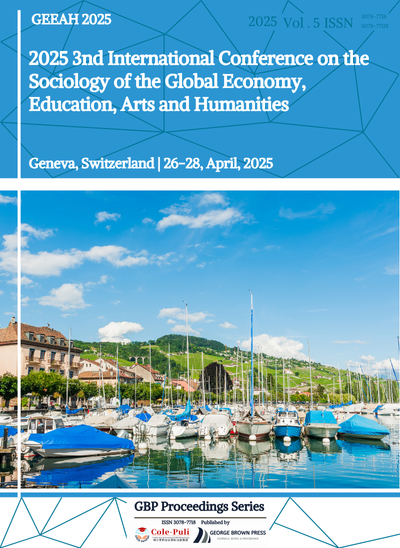The Intrinsic Relationship between per Capita Disposable Income and the Participation Rate in Urban-Rural Residents' Basic Pension Insurance: Exploration and Insights
DOI:
https://doi.org/10.71222/9xhzg295Keywords:
per capita disposable income, Urban-Rural Residents' Basic Pension Insurance participation, time-fixed effects, linear logarithmic polynomial modelAbstract
Against the backdrop of an increasingly aging population, China has implemented the Urban-Rural Residents' Basic Pension Insurance system to alleviate the economic pressures faced by the elderly. This study aims to investigate the impact of per capita disposable income on the participation rate in this pension insurance program. By constructing a linear logarithmic polynomial model and conducting an empirical analysis using panel data from 31 provinces, municipalities, and autonomous regions in China from 2017 to 2022, the study reveals a significant negative correlation between per capita disposable income and the participation rate in the Urban-Rural Residents' Basic Pension Insurance. This suggests that individuals with higher disposable income may opt for alternative pension schemes, such as commercial insurance, thereby lowering their participation in the basic system. The findings provide a reference for policymakers, suggesting further optimization of fiscal subsidies and tax incentive policies to enhance pension insurance coverage among low-income groups and promote the balanced development of the social security system.
References
1. D. Sena and N. K. Nagwani, “Application of time series based prediction model to forecast per capita disposable income,” in Proc. 2015 IEEE Int. Adv. Comput. Conf. (IACC), Jun. 2015, pp. 454–457, doi: 10.1109/IADCC.2015.7154749.
2. G. Yang and L. Zhang, “Relationship between aging population, birth rate and disposable income per capita in the context of COVID-19,” PLoS One, vol. 18, no. 8, p. e0289781, 2023, doi: 10.1371/journal.pone.0289781.
3. Y. Jia and H. Tang, “Modeling China's per capita disposable income by uncertain statistics,” Res. Square, preprint, 2023, doi: 10.21203/rs.3.rs-3304016/v1.
4. Y. Ni, “The influence of digital economy on rural per capita disposable income: Evidence from China,” Environ. Dev. Sustain., pp. 1–22, 2024, doi: 10.1007/s10668-024-05308-8.
5. Z. Xu and M. Xue, “Research on prediction of per capita disposable income of rural residents in Shandong Province based on GM (1, 1) model,” in Proc. 2022 3rd Int. Conf. Comput. Sci. Manag. Technol. (ICCSMT), Nov. 2022, pp. 48–51, doi: 10.1109/ICCSMT58129.2022.00017.











